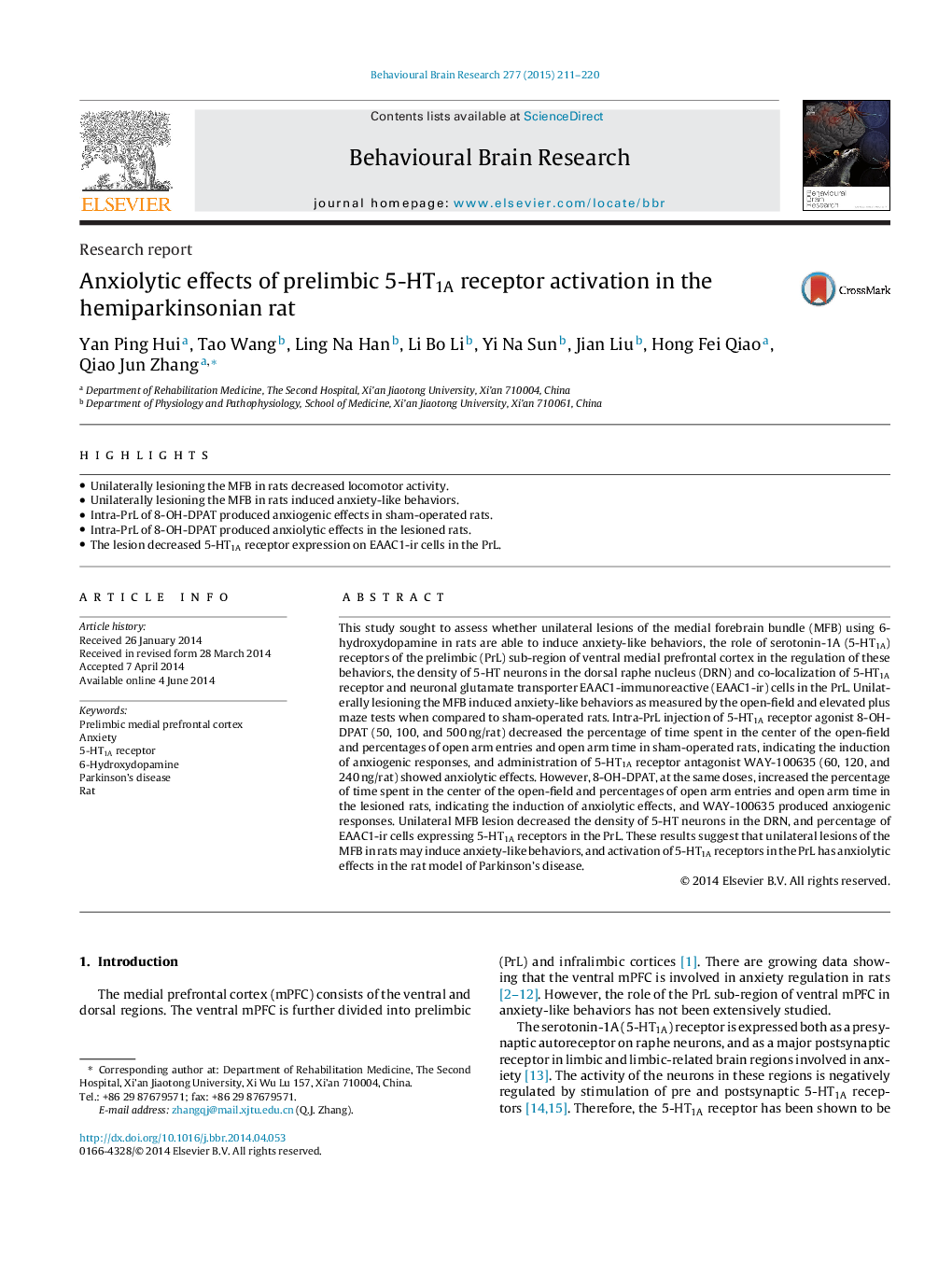| Article ID | Journal | Published Year | Pages | File Type |
|---|---|---|---|---|
| 6257405 | Behavioural Brain Research | 2015 | 10 Pages |
â¢Unilaterally lesioning the MFB in rats decreased locomotor activity.â¢Unilaterally lesioning the MFB in rats induced anxiety-like behaviors.â¢Intra-PrL of 8-OH-DPAT produced anxiogenic effects in sham-operated rats.â¢Intra-PrL of 8-OH-DPAT produced anxiolytic effects in the lesioned rats.â¢The lesion decreased 5-HT1A receptor expression on EAAC1-ir cells in the PrL.
This study sought to assess whether unilateral lesions of the medial forebrain bundle (MFB) using 6-hydroxydopamine in rats are able to induce anxiety-like behaviors, the role of serotonin-1A (5-HT1A) receptors of the prelimbic (PrL) sub-region of ventral medial prefrontal cortex in the regulation of these behaviors, the density of 5-HT neurons in the dorsal raphe nucleus (DRN) and co-localization of 5-HT1A receptor and neuronal glutamate transporter EAAC1-immunoreactive (EAAC1-ir) cells in the PrL. Unilaterally lesioning the MFB induced anxiety-like behaviors as measured by the open-field and elevated plus maze tests when compared to sham-operated rats. Intra-PrL injection of 5-HT1A receptor agonist 8-OH-DPAT (50, 100, and 500Â ng/rat) decreased the percentage of time spent in the center of the open-field and percentages of open arm entries and open arm time in sham-operated rats, indicating the induction of anxiogenic responses, and administration of 5-HT1A receptor antagonist WAY-100635 (60, 120, and 240Â ng/rat) showed anxiolytic effects. However, 8-OH-DPAT, at the same doses, increased the percentage of time spent in the center of the open-field and percentages of open arm entries and open arm time in the lesioned rats, indicating the induction of anxiolytic effects, and WAY-100635 produced anxiogenic responses. Unilateral MFB lesion decreased the density of 5-HT neurons in the DRN, and percentage of EAAC1-ir cells expressing 5-HT1A receptors in the PrL. These results suggest that unilateral lesions of the MFB in rats may induce anxiety-like behaviors, and activation of 5-HT1A receptors in the PrL has anxiolytic effects in the rat model of Parkinson's disease.
